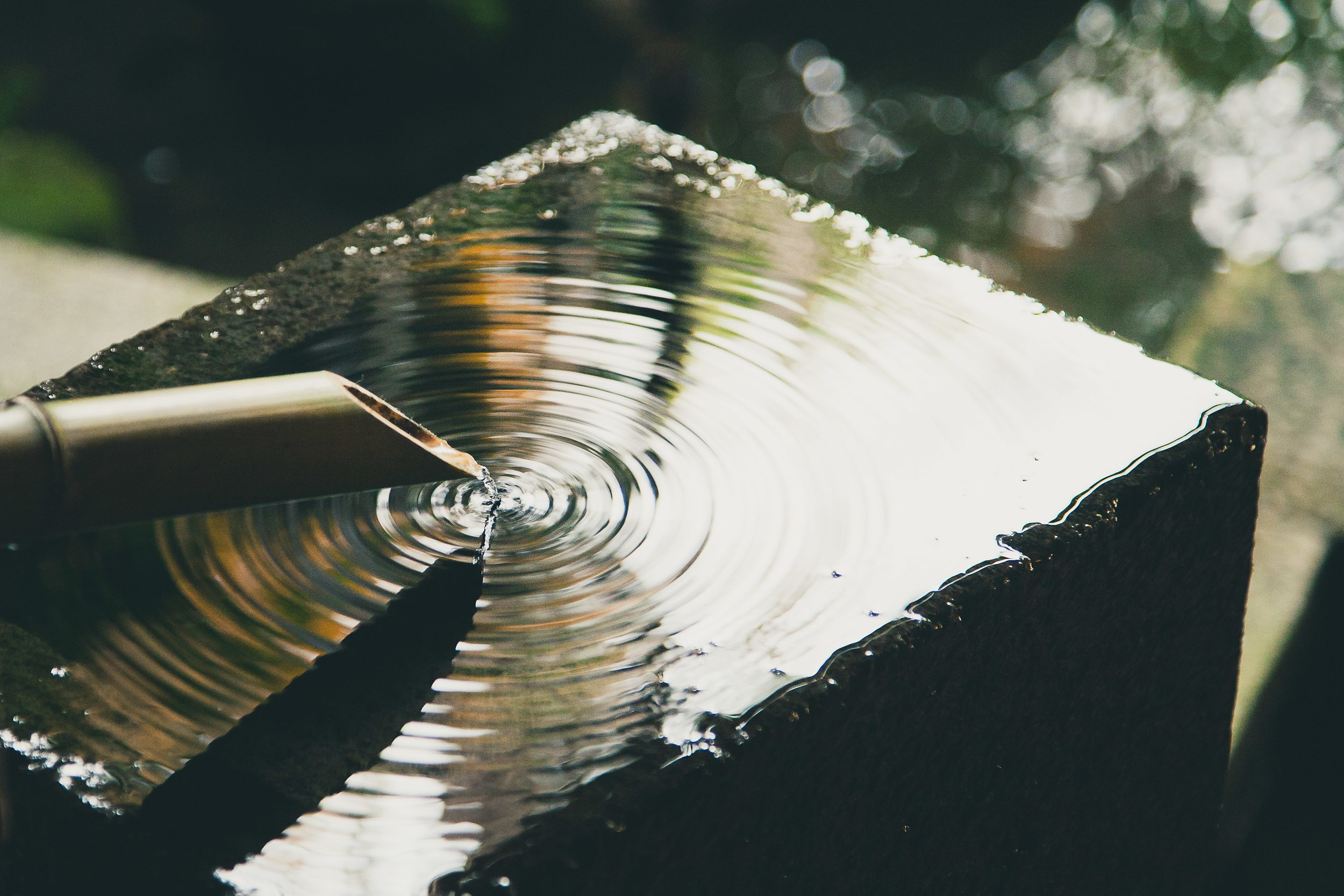Fantasy Or Fact: 8 Outrageous Examples Of Water Conservation From Sci-Fi Movies

Will we survive an apocalypse? Will humans have successfully terraformed another planet by then? What will life look like 376 million years in the future?
Many who have contemplated these big questions have found themselves looking to science fiction for answers. Sci-fi evokes images of space travel, interplanetary colonisation and AI gone rogue. But look past the robots and rockets, and you'll find that many themes evaluate the position of our species in the universe and examine the intergenerational impacts of our actions.
Creators of SF understand the principles governing the natural world; employ the tools of engineering to create fantastical solutions for a better tomorrow; and explore the social implications of these advances. They give us a vantage point from which to overcome current limits to knowledge and innovation, make intellectual leaps into the future and imagine alternative realities. By giving us a glimpse into the possible future of the planet, science fiction forces us to question existing social and ecological attitudes and examine our relationship with nature.
Science fiction often dismantles accepted notions of life, the universe and everything. But occasionally, a speculative technology born in fiction finds itself with a real world parallel, proving that futuristic gadgets do not always live in the realm of fantasy, that they do shape real world inventions. Many a modern day innovator has drawn inspiration from science fiction, evident in Elon Musk's nod to Douglas Adams' classic in his recent mission to Mars.
Water - a resource most of us take for granted - is a recurrent sci-fi theme with fictional habitants of water-scarce planets developing complex social mores around the saving and sharing of it, illustrated beautifully in the writings of Robert Heinlein and Frank Herbert.
Here, I've picked some of my favourite examples of water conservation tech from the world of science fiction - solutions that might appear outrageous and offensive because they challenge established norms of culture and morality, but that force us to look beyond the present and imagine how, at a (not so) distant time in the future, human beings might live and interact with their environments.
Dune's moisture-reclaiming Stillsuits
Stillsuits were full body suits manufactured by Fremen, inhabitants of the desert planet Arrakis where no natural precipitation or water sources existed, and where water was the most precious commodity. The suits were designed to collect and recycle body moisture lost through sweat, urine, water vapour from breath, even faeces! The collected moisture is filtered and the resultant potable water is stored in catchpockets to be drunk by an individual from a tube attached to the neck. The water collected by stillsuits was enough to help the wearer survive weeks in the desert without any other source of water. Inspired by the Stillsuit, a British company developed The Sweat Machine - a device that extracts water from sweat-soaked clothes and purifies it using a technique known as membrane distillation.
Sonic showers of Star Trek
Sonic showers were a technology aboard Federation Starships that emitted high frequency sound waves to dissolve dirt and grime from the bodies of spacefaring humanoids, completely eliminating the need for water. Sonic showers are a knight's move away from the real world, but showers that recycle their own used water maybe the breakthrough in water-saving technology we need given that a typical 10-minute shower consumes upwards of 100 litres of water.
Turning rocket fuel into water in The Martian
In the horrifying event that we run out of water before we deplete our fossil fuel reserves, we could use some space-y survival techniques. Presumed dead and stranded on Mars, when astronaut Mark Watney learned he would only be rescued in 4 years, he is forced to take matters into his own hands. Faced with the possibility of running out of food supplies, he drew on his training as a botanist, and improvised a farm to grow potatoes. He fertilised the soil with his own waste and irrigated it with water produced by breaking down the rocket fuel Hydrazine to produce H2, then combined it with the O2 from his habitation module to produce water. It's good that liquid water has been discovered in Martian soil because this procedure is so dangerous, it comes with a 'don't try this at home' warning.
Moisture-farming in Star Wars
On the sun-scorched terrain of Tatooine where surface water and vegetation were hard to come by, most desert settlers like Luke Skywalker's aunt and uncle were 'moisture farmers' who harvested humidity from the atmosphere via moisture farms to survive the hot, dry landscape. They used devices called 'moisture vaporators' which were mounted on the ground and drew whatever little moisture they could from the planet's dry air. Researchers are now working on adapting this technology - turning fiction to fact to address the water woes of the real world.
Waterworld's Urine Recycler
In what's been called an eco-parable ahead of its time, The Mariner (as Costner's character is known) has a device that turns his urine into potable water. Gross as it may sound, it's what keeps him alive in a post-apocalyptic world where the polar ice caps have melted and the seas have risen to claim all of the land. So, why didn't The Mariner just filter the sea water around him? Turns out it's far easier to remove the small number of contaminants in urine than filter out the large number of varying pollutants - from drowned cities, industries and other remnants of anthropogenic activity - in ocean water. Drinking recycled pee does not require a quantum leap of imagination; astronauts do it all the time! They recycle water from urine, showers as well as from moisture collected from the breath and sweat of crew members. In the urine filter may also lie the inspiration for modern day inventions such as the Slingshot - a device that can purify any water source - sewage, seawater, poisoned well water, chemical waste - no matter how polluted, and transform it into safe drinking water without using chemicals or filters. Israel, which recycles upwards of 80 percent of its wastewater for use in agriculture, has demonstrated the immense potential of technology to reclaim sewage for domestic and industrial use.
Recycling wastewater in Pumzi
The setting for this Kenyan short is a dystopian future in a world riven by water wars and ecological devastation. A small group of Maitu survivors live locked up in self-contained communities where water is scarce and every member is devoted to its meticulous conservation. Each resident receives a small daily ration of potable water. Liquid waste from urine, and sweat produced while powering the manual energy-production machines, is collected in a water bottle and recycled for personal use.
The Deathstills and Windtraps of Children of Dune
The absence of surface water on the desert planet Arrakis made the Fremen master water conservationists who collected and stored all atmospheric and body moisture in the hope of one day transforming their home planet into a green one. According to Fremen tradition, a person's water belonged to his/ her tribe. As a result they developed deathstills as a way of distilling the water from dead animals and people, since the deceased had no further use for it. Water reclaimed by individual deathstills was collected in large, collectively-owned underground catch basins - akin to our recharge wells - present in every sietch or village. Atmospheric moisture reclaimed from cool night air by windtraps was also channelled into the catch basins.
Life of Pi's Solar Stills
If you're a Bear Grylls fan, chances are you'd have seen how survivalists use solar stills. They're also what kept Piscine Molitor Patel and Richard Parker alive during the 227 days they were stranded in middle of the Pacific Ocean. With the solar stills aboard his life raft, Pi used the heat of the sun to evaporate seawater, cool it, then collect freshwater to drink. Solar stills are used in many small distillation plants, but the large scale feasibility of solar-powered desalination is being tested in Africa and the Middle East.
Maya is a social researcher by training. Her writing has appeared in Scroll, YourStory and The Alternative. She is the Founder of Eartha and tweets @Maya_Kilpadi.





